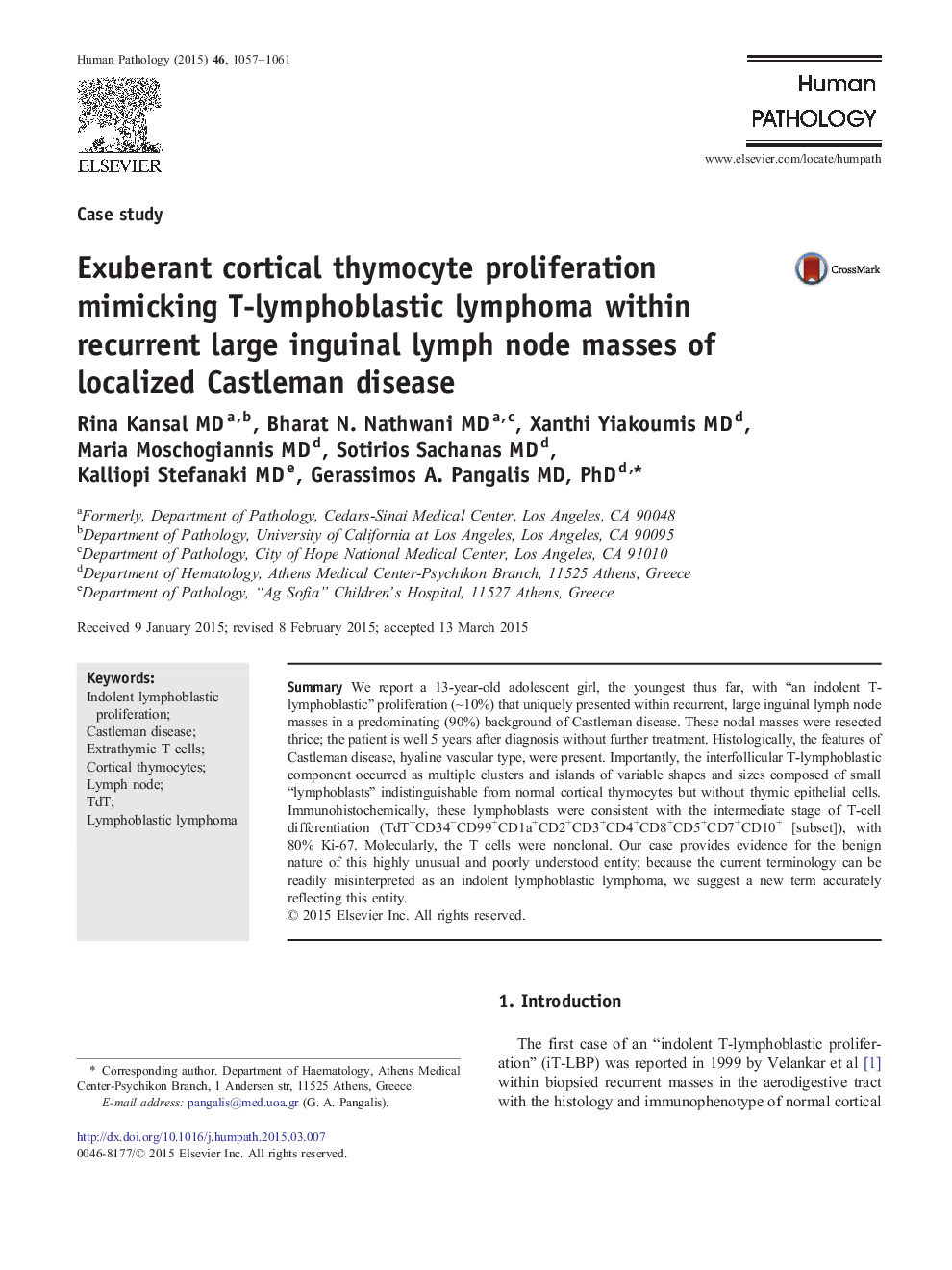| Article ID | Journal | Published Year | Pages | File Type |
|---|---|---|---|---|
| 4132845 | Human Pathology | 2015 | 5 Pages |
SummaryWe report a 13-year-old adolescent girl, the youngest thus far, with “an indolent T-lymphoblastic” proliferation (~10%) that uniquely presented within recurrent, large inguinal lymph node masses in a predominating (90%) background of Castleman disease. These nodal masses were resected thrice; the patient is well 5 years after diagnosis without further treatment. Histologically, the features of Castleman disease, hyaline vascular type, were present. Importantly, the interfollicular T-lymphoblastic component occurred as multiple clusters and islands of variable shapes and sizes composed of small “lymphoblasts” indistinguishable from normal cortical thymocytes but without thymic epithelial cells. Immunohistochemically, these lymphoblasts were consistent with the intermediate stage of T-cell differentiation (TdT+CD34−CD99+CD1a+CD2+CD3+CD4+CD8+CD5+CD7+CD10+ [subset]), with 80% Ki-67. Molecularly, the T cells were nonclonal. Our case provides evidence for the benign nature of this highly unusual and poorly understood entity; because the current terminology can be readily misinterpreted as an indolent lymphoblastic lymphoma, we suggest a new term accurately reflecting this entity.
